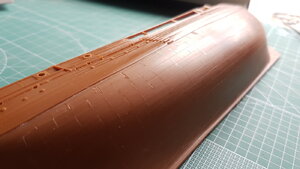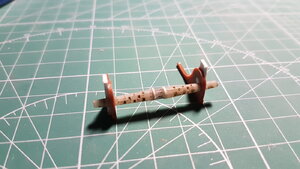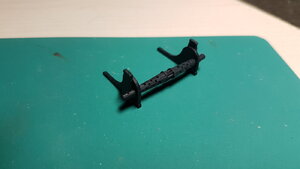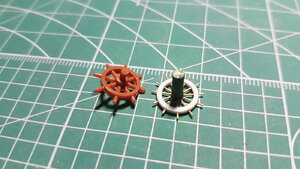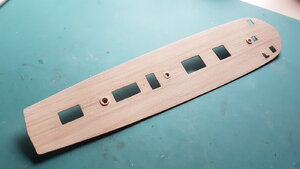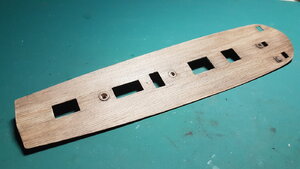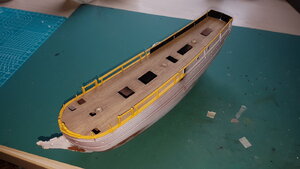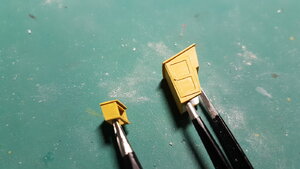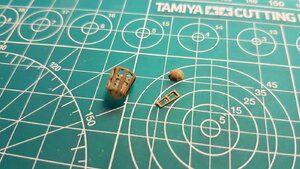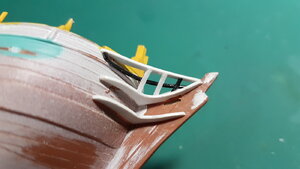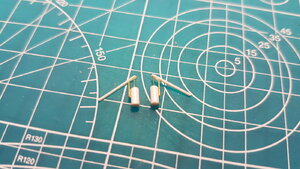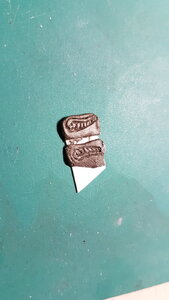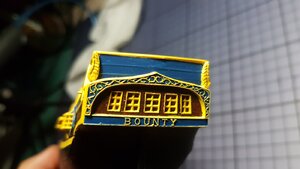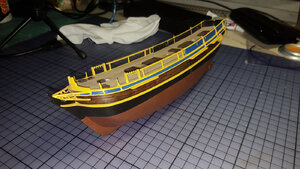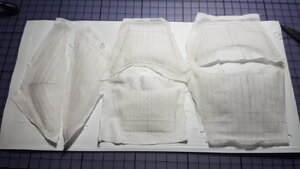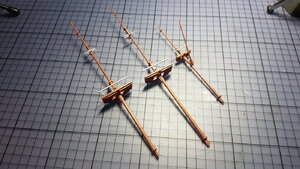- Joined
- May 13, 2020
- Messages
- 7
- Points
- 53

Here goes, my "first" ship kit build. I say first because the others I made were as a teenager and I didn't really put much time or effort into those.
Anyway, the HMS Bounty by Revell. Old mould that dates back to 1956. Was state of the art then, not so much anymore. The kit has many issues with flash and badly placed ejection pin marks. There are also some accuracy issues that I will attempt to remedy as best as I can. Though bear in mind I know practically nothing about ships and am learning along the way.
I started work with the deck. It has raised details which are not too bad. They would get the job done with a bit of paint, but what bothered me was ejection pin marks all over the deck as well as a bewilderingly placed copyright symbol.
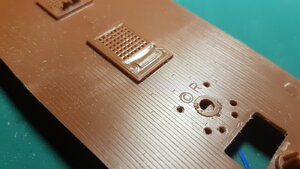
If I remedied those issues I'd be left with patches without the surface detail that would be very difficult to recreate. That's why I decided to sand the entire deck and re-scribe the planks. I also decided to simply cut out all the hatches because they just had surface detail. The holes did not go all the way through.
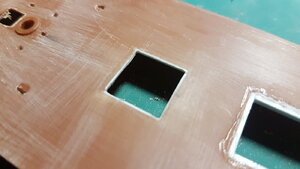
To replace the hatches I 3D modelled and printed new ones. I only have a cheap FDM 3D printer, but I think the result will be vastly superior to the original part. Here is a dry fit of the new parts.
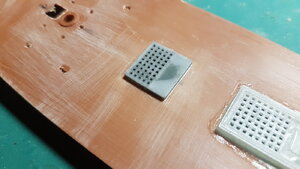
And although the interior would only be visible under the correct angle and with perfect lighting, I will probably scratch build some stairs leading down. Because I can. I will also scratch build or maybe 3D print a few other things for the deck, like the binnacle (just one of the many nautical terms I'm learning along the way) and flag locker, that are simply missing from the kit. That as well as a few other details make me think that this model was erroneously based on the Bethia, that the Bounty was converted from. At least in some details.
In the place of the flag locker, there was another of the hatches, but I removed that similar to the other ones and filled it in with some styrene. Here it is with some cyanoacrylate still curing.

The work on the deck itself is mostly done now. I only realised half way through that, since I removed most of the details anyway, It'd be easier to just scratch build it. Maybe next time. I still have to scribe the planking and after that I will work on the hull, which has its own issues. It is missing the copper cladding and instead has wooden cladding. I will probably sand down the surface and scribe in plates. I don't consider myself good at scribing, so this model will provide plenty of practice.
I am also dreading all the rigging. I essentially have zero experience with it, so it'll be a big learning process.
Anyway, the HMS Bounty by Revell. Old mould that dates back to 1956. Was state of the art then, not so much anymore. The kit has many issues with flash and badly placed ejection pin marks. There are also some accuracy issues that I will attempt to remedy as best as I can. Though bear in mind I know practically nothing about ships and am learning along the way.
I started work with the deck. It has raised details which are not too bad. They would get the job done with a bit of paint, but what bothered me was ejection pin marks all over the deck as well as a bewilderingly placed copyright symbol.

If I remedied those issues I'd be left with patches without the surface detail that would be very difficult to recreate. That's why I decided to sand the entire deck and re-scribe the planks. I also decided to simply cut out all the hatches because they just had surface detail. The holes did not go all the way through.

To replace the hatches I 3D modelled and printed new ones. I only have a cheap FDM 3D printer, but I think the result will be vastly superior to the original part. Here is a dry fit of the new parts.

And although the interior would only be visible under the correct angle and with perfect lighting, I will probably scratch build some stairs leading down. Because I can. I will also scratch build or maybe 3D print a few other things for the deck, like the binnacle (just one of the many nautical terms I'm learning along the way) and flag locker, that are simply missing from the kit. That as well as a few other details make me think that this model was erroneously based on the Bethia, that the Bounty was converted from. At least in some details.
In the place of the flag locker, there was another of the hatches, but I removed that similar to the other ones and filled it in with some styrene. Here it is with some cyanoacrylate still curing.

The work on the deck itself is mostly done now. I only realised half way through that, since I removed most of the details anyway, It'd be easier to just scratch build it. Maybe next time. I still have to scribe the planking and after that I will work on the hull, which has its own issues. It is missing the copper cladding and instead has wooden cladding. I will probably sand down the surface and scribe in plates. I don't consider myself good at scribing, so this model will provide plenty of practice.
I am also dreading all the rigging. I essentially have zero experience with it, so it'll be a big learning process.




